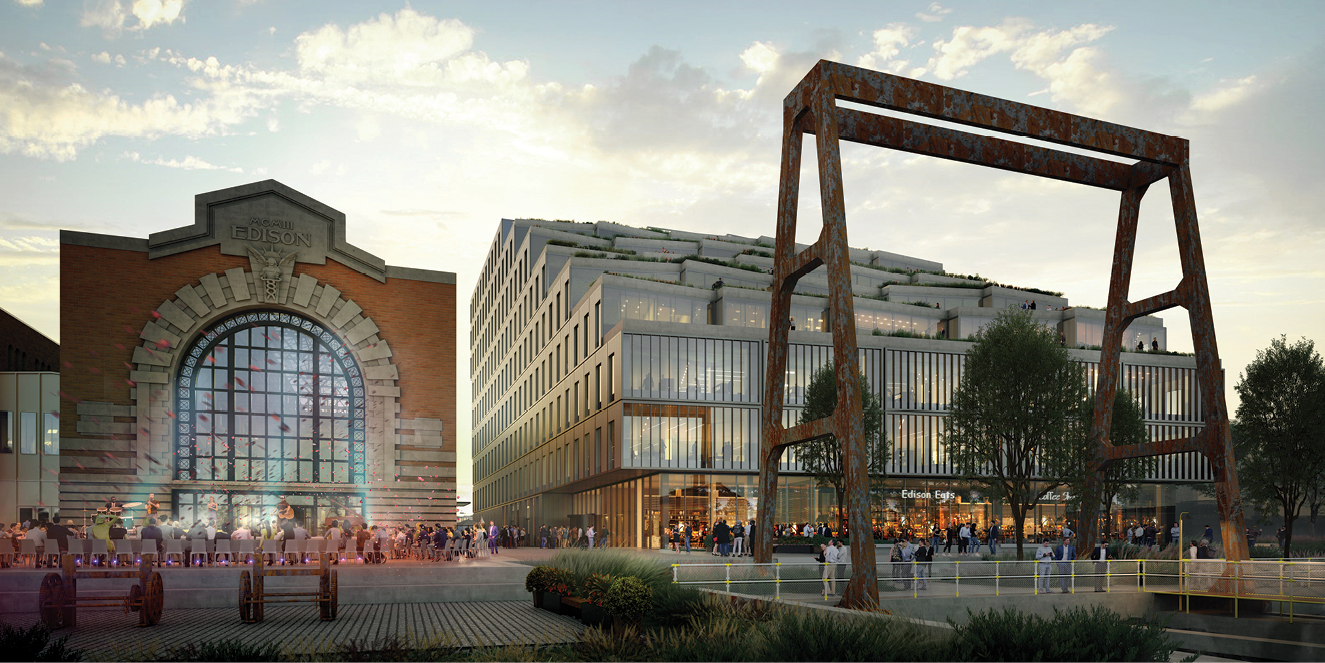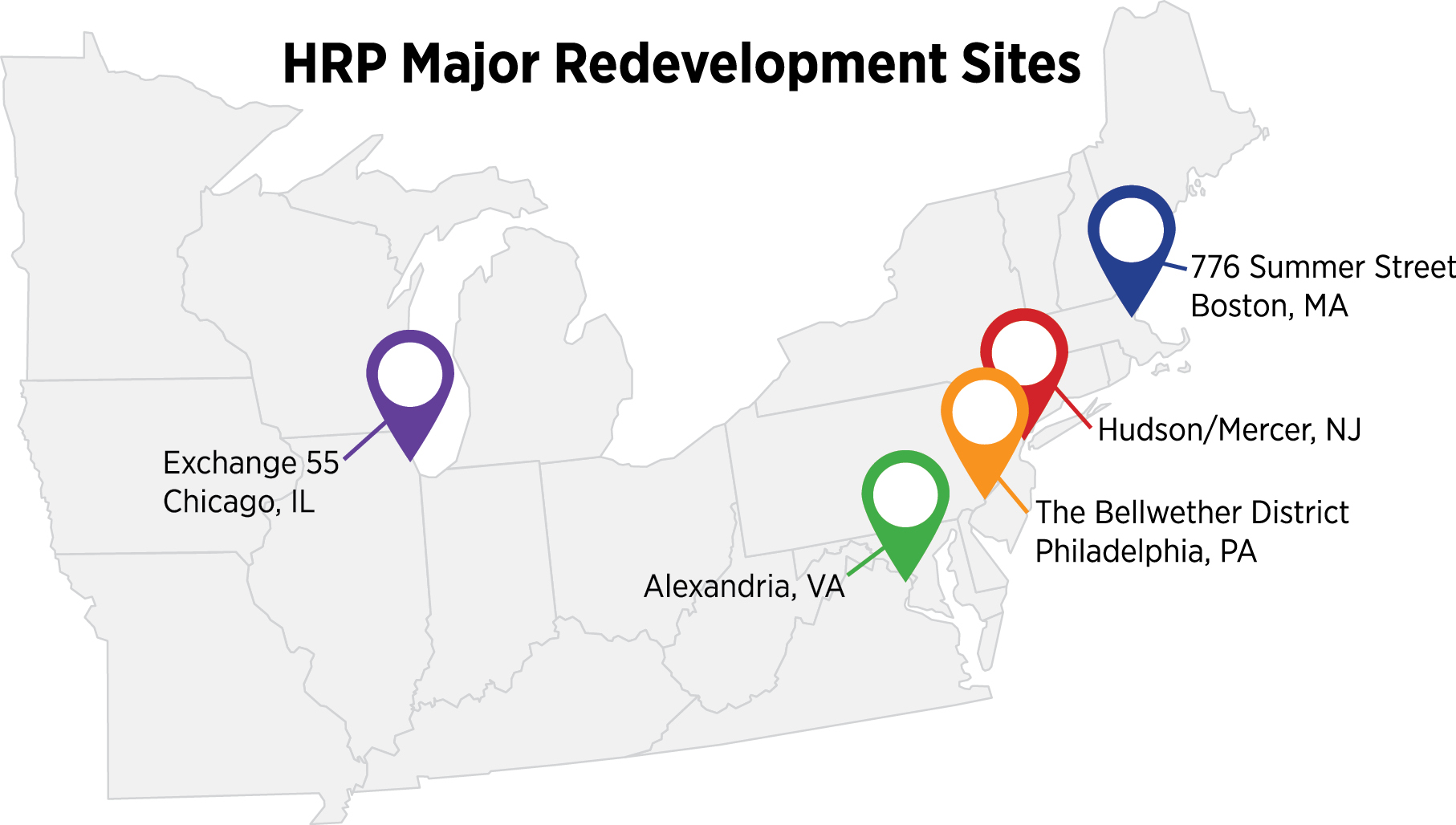Tired of driving by that unsightly, shuttered industrial complex near your city’s central business district? Hilco Redevelopment Partners (HRP) may have a plan for it. Since 2010, the real estate investment and redevelopment unit of Hilco Global has been transforming former steel mill, refinery and power-plant properties into repurposed centers of commerce, creating thousands of jobs in the process.
Examples include Tradepoint Atlantic, a 3,300-acre global, multimodal logistics hub and industrial center on the site of a former Bethlehem Steel plant near Baltimore, the Bellwether District in Philadelphia where the PES refinery once stood, and redevelopment of a former power plant on the Boston Harbor waterfront into a 15-acre mixed-use development.
“The real estate was there for a reason, such as labor or logistics connections like rail, water or highway,” says CEO Roberto Perez. “I believe it’s better to reuse an asset rather than develop a greenfield project. In fact, we have a mandate that we do not do development on a greenfield site.”

776 Summer Street, Boston
Image courtesy of Hilco Redevelopment Partners
In essence, HRP does the heavy lifting on the front end — environmental cleanup, demolition of structures and community outreach, among other tasks, so that new users of the property can take advantage of the same location benefits the original user did.
“Stakeholders want to see us take a property and do a 180-degree turn from what it was previously,” says Andrew Chused, Chief Investment Officer. “We made the decision almost 13 years ago to specialize in obsolete industrial sites that are surrounded by irreplaceable infrastructure with tremendous connectivity to a strong workforce. That is extremely important to everyone involved in one of our projects. There’s a perceived risk of developing these sites, and we set up a best-in-class team that can understand the actual risk.”
Chused says HRP’s portfolio today stands at about 25 million square feet of existing and to be developed sites across key markets that have a very high barrier to entry. “These projects become beacons of sustainability and reinvention for the future for a lot of our tenants and investors,” he relates. “They’re shining examples of what can be done when you roll up your sleeves a bit further.”
Guiding Principles
HRP’s redevelopment strategy is based on three pillars of sustainability — environment, economy and community. The first can be seen in the company’s commitment to exceeding state and federal remediation regulations and sustainable design of new facilities. This includes use of renewable energy, infrastructure for electric vehicles, LED lighting, water-efficient fixtures, extensive landscape plans and energy-efficient building envelopes.

The economic pillar emphasizes local hiring and creation of sustainable economic engines for the metros and regions in which they are located. That doesn’t happen overnight.
“These projects are very complicated and require a tremendous amount of outreach to the community, elected leaders and other stakeholders,” says Chused. “We do this very early in the process and quite often so that we maintain transparency in communication with everyone. These are generational projects, and we live with them for a very long time. By listening closely, we can incorporate programs that the community and our tenants benefit from. These typically include apprenticeship programs, job fairs, internships and scholarship programs. This comes from listening to what people want and need.”
HRP defines the community pillar as keeping the surrounding communities informed about project plans and making redevelopments accessible to residents and tenants’ employees via public transportation and connectivity to offsite community infrastructure.
“A common theme across all our projects is labor and the communities that live around our projects,” notes Perez. “In Chicago, for example, a lot of the labor has to commute into the suburbs to find employment. We redeveloped a site there that was once one of the largest coal-fired power plants in Chicago, transforming it into the largest LEED-certified industrial building in the city, and our tenant today is Target. Nearly 3,000 jobs have been created.” The retailer operates a 1.3-million-square-foot warehouse and distribution facility on a 70-acre site in the West Side Little Village neighborhood with easy access to Interstate 55.
“We put ourselves in the end users’ shoes,” says Perez. “What do they need in order to come to our site? Usually it’s labor, and we have amazing labor stories across our projects. Then it’s logistics and how we interact with the assets that are near us. We stress to tenants how efficient they will be at one of our projects, in hiring for example, and in their supply chain. The companies that come to our projects need this.”

This Investment Profile was prepared under the auspices of Hilco Redevelopment Partners. For more information, visit www.hilcoredev.com.

